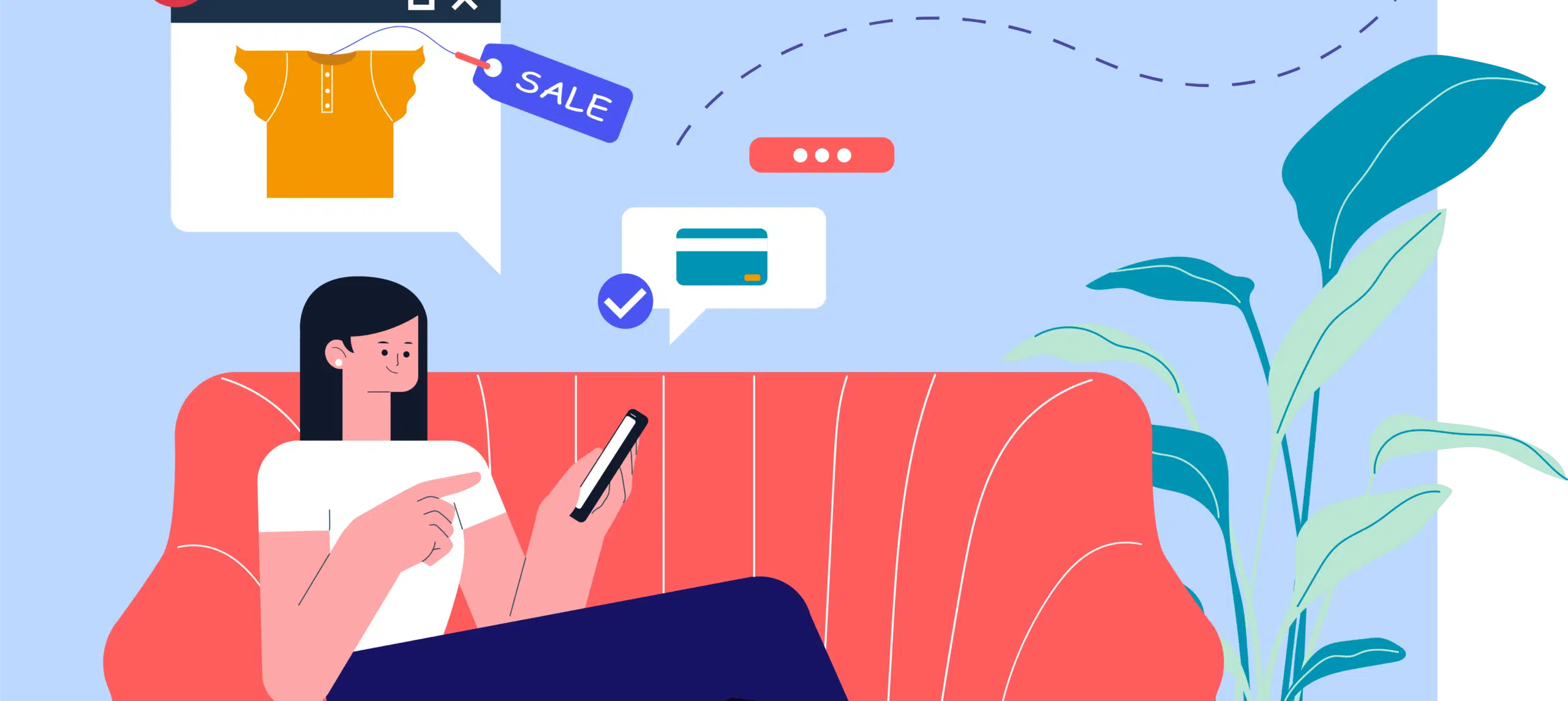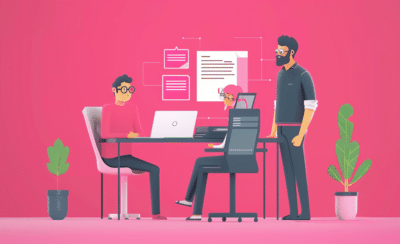So, yes—we’ve previously written about B2B go-to-market strategy (here and here). But where does it differ when it comes to B2C go-to-market strategy and B2C marketing strategies?
Good question.
Let’s start at the beginning. Go-to-market strategy comes into play when you have a fantastic product that’s ready to…well, you know. It entails everything from distribution to partnerships to marketing.
But, creating your B2C go-to-market strategy has to happen at the core of your product’s inception. Its planning should start at the initial point of product strategy because it’s the key to narrowing down how to answer your users’ needs.
Go-to-market strategy—and in this case, B2C go-to-market strategy—answers the question of how to meet demand. Basically, how to get your product into the hands of those who need and want it.
TLDR; Contents
What is B2C?
Alright, let’s establish the basics. A B2C model stands for business-to-consumer. This means that you’re selling and marketing to the individual consumer rather than selling to businesses.
So, you can be selling anything—goods, services, SaaS products, you name it—but you’re selling it to individual buyers and users.
These days, B2C is often related to e-commerce and digital products—but it’s not a new model. Think 80’s infomercials, and you have the right idea.
In the online B2C go-to-to market world, there are a few different types of models.
- Advertisement-based: meaning, businesses who use targeted ads to lead customers to their websites and digital companies.
- Direct Sellers: meaning, businesses that sell goods from branded online stores or apps.
- Intermediaries: meaning, businesses that are marketplaces and link between buyers and sellers without actually owning and selling the products.
- Fee-based: meaning, businesses that sell fee-based services; often, they’re subscription-based and/or D2C (direct-to-consumer).
What is a B2C Go-to-Market Strategy?
Simply put, a go-to-market strategy refers to the sequential plan that launches a product to market and gets the product or service into the hands of consumers.
If it’s planned well, it’ll be tailored to the business’s target audience, their needs, and the market gap that allows the product to enter. A good B2C go-to-market strategy will include B2C marketing strategies and sales strategies.
The core components of a go-to-market strategy will consider and evolve around:
- Establishing Product-Market-Fit: meaning, what problems does your problem solve, and does your product effectively and accessibly solve them?
- Finding Your Target Audience: meaning, who has the pain points your product solves, what is their willingness to pay, and what are their specific frustrations surrounding the issue you’re aiming to fix?
- Evaluating The Market Landscape and Saturation: meaning, who else is already offering a solution to the problem you’re trying to solve, and is there still demand for a solution or is the market crowded and oversaturated?
- Deciding on Distribution: meaning, how will you get your product or service into the consumers’ hands?
B2C Go-to-Market Strategy vs. B2C Marketing Strategies
There may be some confusion between the terms “B2C Go-to-Market Strategy” vs. “B2C Marketing Strategies,” but the difference is relatively simple.
A marketing strategy is ongoing—meaning, your continuous efforts to increase revenue by increasing brand awareness and engagement. These are efforts that encompass content marketing, influencer relations, social media marketing, and paid advertisements.
On the other hand, a go-to-market strategy is a strategy that you use to launch a product into the market. It encompasses everything from sales strategy to pricing, distribution, and, yes, marketing.
And so, these are not synonymous—but B2C marketing strategies are a huge part of any B2C launch because these efforts are the ones that create awareness and increase demand.
How to Plan a B2C GTM Strategy
B2C Go-to-Market Strategy Step #1: Identify and Empathize with Your Buyer Personas
Your buyer personas are the answer to the question, “who has the problem I’m solving or need I’m filling?”
To isolate who they are, start from the problem and then work backward. For example, you probably got the idea for your product by either personally experiencing this need or want, witnessing someone else having it, or noticing a gap in the market that doesn’t address it.
So, work backward. If you’re creating a dating app for magicians, the problem is that magicians have a hard time connecting with one another. Who has that problem? Magicians.
Additionally, what do their demographics, psychographics, behavior, and geographic characteristics look like? Why do they have such a hard time finding one another? Finally, what does their day-to-day look like in terms of dating and looking for a partner?
Once you have these answers, you’ll be able to empathize with them. Then, you’ll be able to effectively craft your messaging, marketing channels, and distribution strategies such that they reach and connect with them.
Of course, all of this information should be backed by robust qualitative and quantitative data achieved through market research. Therefore, you’ll want to use both primary research (surveys, questionnaires) and secondary research, such as competitive analysis and scouring for data that’s already available.
B2C Go-to-Market Strategy Step #2: Create a Value Matrix to Identify and Test Messaging
Once you’ve gotten to know your buyer personas very well, it’s time to craft the messaging you’ll orient towards them. For example, magician X, Robert, is a man from Milauwakee in the 50 to 60-year-old range, twice divorced, with three adult kids. The value he’ll retain from your product might be different from that of Jenny, 26, no prior long-term relationship, no kids, from Los Angeles. Or not—but that’s where your market research will come in handy.
So, when you isolate the personas, their specific painpoints, and the product value they retain—you’ll be able to craft the message that most effectively communicates your value proposition to that buyer persona. That’ll be your value matrix.
And once you’ve crafted your messaging, it’ll be time to test it.
You’ll want to use your advertising channels and marketing platforms to target your buyer personas specifically. You’ll want to test the advertising channel you choose, the audience you target, and messaging that’s tailored to them.
And, you’ll want to do this on a relatively small scale—and before spending a lot of resources (both financial and reputational) on messaging that might not work.
If you see higher CTRs, engagement, or conversion rates of specific demographics or buyer personas, you will get a clue you’ve hit the target. If not, you’ll know you need to adjust something. Moreover, with those statistics, you’ll know where to invest your ad buying resources—and where to not.
B2C Go-to-Market Strategy Step #3: Establish Your Sales and Distribution Strategy
Your sales and distribution strategies are, in essence, how consumers get their hands on your product.
A digital product—like the very hypothetical app we mentioned—might be an app sold through an intermediary (app store) on a fee-based subscription model. Alternatively, it could be a website hosted by the company and sold in a more D2C fashion.
The point is to choose the sales and distribution strategies that fit your buyer personas best. So, for instance, your users might be big on mobile, and your digital product lends itself to be taken on the go and location-based. In that case, it may be best to stick with a distribution channel that uses an intermediary so that you can leverage the platform they give for ASO (app store optimization).
B2C Go-to-Market Strategy Step #4: Craft Your Marketing Strategy
Your marketing strategy will (and should) revolve around the following tenants:
- Connecting with your buyers through empathetic, personalized messaging
- Crafting and distributing content to boost engagement and increase awareness
- Using social media marketing with paid targeted ads that attract and pique the curiosity of potential buyers
- Taking advantage of ad retargeting to harness the power of multiple exposures to your brand
- Hiring influencers to build brand awareness that’s infused with trust
- Aggregating and publicizing social proof (feedback, reviews, testimonials)
- Selling directly through brick-and-mortar establishments and IRL advertisements
B2C Go-to-Market Strategy Step #5: Churn Out and Optimize Content
Additionally, there’s this point about content marketing: 94% of B2C marketers are either planning or already have a content marketing strategy. And that’s not surprising—content marketing is an essential part of a B2C go-to-market strategy.
Content marketing can include blog posts, infographics, case studies, white papers, videos, podcasts, and tutorials. However, it’s essential to ensure that these materials bring personal value to the consumer exposed to them.
Well, this was a lot. We know.
Coincidentally, hi, we’re Goji Labs—a product and software development consultancy with experience in designing, “rescuing,” and deploying hundreds of products.
Looking to develop a new app or revamp an existing one? Need some product strategy or mobile app and software development help?
Have any general questions about who we are and our authority on the subject?
Reach us at GojiLabs.com or drop us a line.
– Goji Labs




